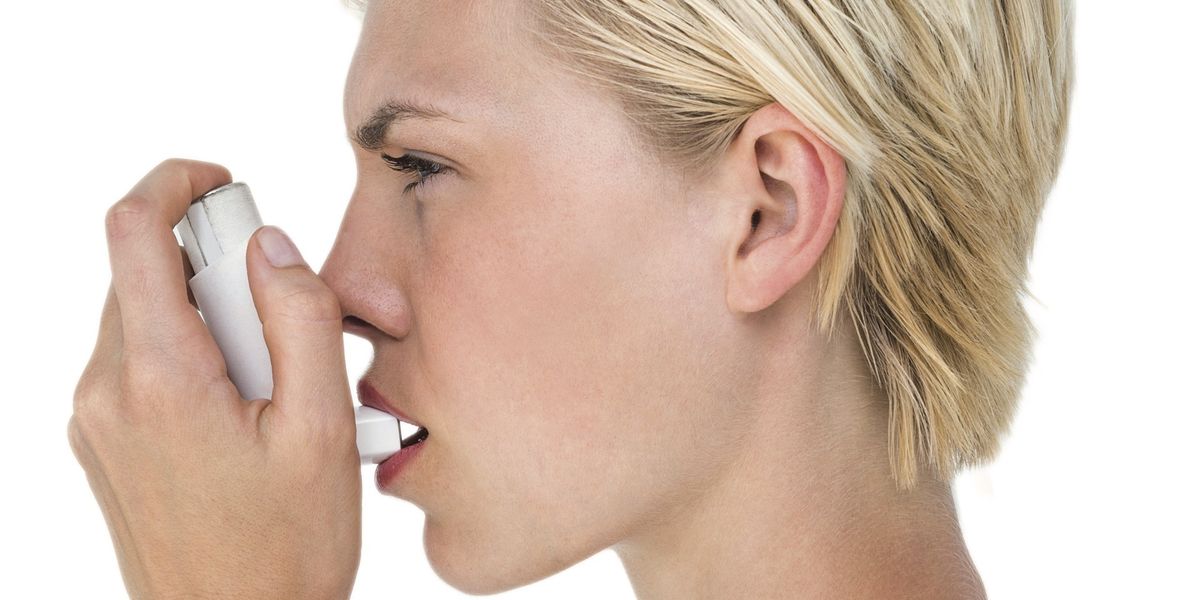Dancing With Asthma
It starts with a tight feeling in your chest. Your breaths become shallow and high, like your lungs are sitting at the back of your throat. Then, panic sets in. You’re gasping for air, and the anxiety is only making it worse. I was diagnosed with asthma in my early teens, and it would act up whenever I was rehearsing something extra-strenuous. While it rarely put me in immediate medical danger, it certainly changed the way I danced. I approached difficult phrases with less confidence, and tried to save so much energy in the early minutes of pieces that I moved too cautiously.
Dancing, and other physical activity, can trigger an asthma attack. But that doesn’t mean you have to let it impact your work. Instead, you can learn how to prevent and control your breathing problems. It will help you feel more secure onstage, give more power to your dancing and, most importantly, keep you out of a dangerous medical situation.
Why It Happens
When you have an asthma attack, it’s because your airway has narrowed and become inflamed, limiting the air that can get to your lungs. Asthma, which usually develops by age 30, can have many different triggers, says Atlanta Ballet primary care physician Kara Pepper. It could be environmental, like cold air or dust; allergy-related, like pollen or pet dander; or because of exercise itself.
What to Do
If you’re having trouble breathing, see your primary care doctor, who may refer you to a lung doctor or allergist, depending on your symptoms. You’ll probably be given a physical exam, as well as a series of breathing tests that measure the power and capacity of your lungs. Most people diagnosed with asthma are prescribed a rescue inhaler. These are used to help open up airways in the lungs, but only relieve symptoms temporarily. If you are experiencing symptoms weekly, you would be given a daily prescription to lessen the need for a rescue inhaler, says Pepper.
Take Control
Keeping your asthma under control means always having your inhaler within reach, whether that’s in your dance bag or safely hidden in the wings during a performance. If you know you’ll be dancing something extra-aerobic, take a puff from the inhaler 30 minutes prior. Many rescue inhalers contain a short-acting medication, which can make some people feel shaky and have a racing heartbeat, but it usually isn’t enough to throw off your performance.
Learn what triggers your breathing problem. For instance, you could avoid allergens by using your air conditioner during high pollen seasons. Clean your living space regularly, since dust—even if you’re not allergic—can be a key player. And invest in a dehumidifier if you live in a particularly damp climate. Pepper’s biggest advice is to find a lung doctor to monitor the severity of your symptoms. Lastly, get a flu shot every year and a pneumonia shot sometime after you turn 18, as both illnesses greatly impact lung capacity.
Asthma is a manageable problem, and very rarely will it impact your health so much that a doctor would suggest abandoning dance altogether. You just have to take command of your health, like you would with any tricky piece of choreography that comes your way.
Tips and Tricks
– If you’re having difficulty breathing
while dancing, put your hands on your hips or on your head to give your ribs room to expand and help you recover.
– Keep a diary detailing your attacks to discover what your triggers are.
– Choreograph your breathing throughout a piece. Knowing exactly where you need to concentrate on your lungs can calm anxiety.
– Try to relax. The more anxious you feel about your asthma acting up, the worse it can make an attack.
– Always give yourself a good warm-up. No one should take their body from zero to 100 immediately, especially if your lungs need a little extra help.
Eating for Better Breathing

Thinkstock
According to the Mayo Clinic, people with asthma may have low levels of vitamin D—something many dancers often lack because they spend so much time indoors. Get your fix through salmon, milk, eggs and some sun. Fruits, vegetables and other antioxidant-packed foods have been found to decrease lung inflammation. And, of course, avoid any foods that may trigger an allergic reaction.




